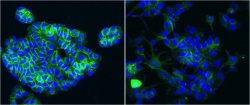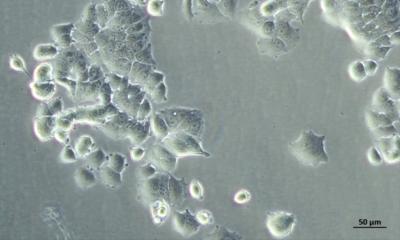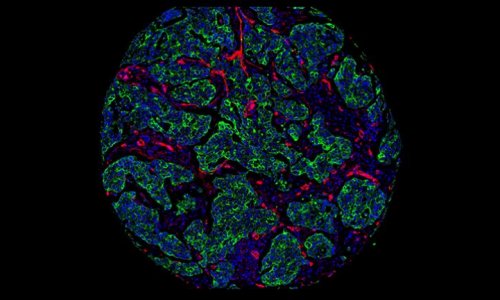mTOR
Cells in limbo hold clues for tackling cancer and ageing
For some, TOR may bring to mind a Celtic mountain or perhaps an Internet privacy group. In the world of molecular biology it’s a cellular pathway that’s found in everything from yeast to mammals. mTOR (as it’s called in mammals) plays a central role in instructing the cell to grow and divide in response to nutrients. When it’s turned down, the cell shifts into a second, tidying mode, recycling old proteins and generally cleaning up inside the cell.

When life is good mTOR allows the cell to keep on dividing. When life is not so good this shift into a second, stress-resistant mode keeps the cell idling – and appears to delay ageing. The importance of mTOR has been recognised for a while, and it has come to the attention of those seeking anti-ageing pills. But exactly how mTOR carries out its central role has not been clear. Now, researchers from the MRC’s Clinical Sciences Centre (CSC) at Imperial College London have described how they believe mTOR could operate.
What they have found “could have implications in understanding why we age and how we can improve treatments for age-related diseases, including cancer” according to Nicolas Herranz, a postdoctoral fellow who carried out the research.
The research was led by Jesús Gil’s Cell Proliferation group, working with collaborators including Dominic Withers’ Metabolic Signalling group at the CSC, Cancer Research UK’s Cancer Sciences Unit at the University of Southampton and the Division of Molecular Oncology of Solid Tumors at the Eberhard Karls University in Tübingen in Germany.
The team suspected that mTOR might be operating via one of the most intriguing of cellular processes. At the end of their life, our cells are often eased into retirement. They enter a state of limbo known as “senescence”, when they are still active but unable to divide again.
Although typically associated with ageing, this phenomenon is also activated by genes that cause cancer, or “oncogenes”, thereby keeping at bay those cells that are damaged or dangerous, in order to prevent their spread.
“Senescence is something of a double-edged sword. It is largely beneficial during your life, because it acts as a tumour-suppressor mechanism,” said Suchira Gallage, a PhD student working on the project. “But as we age, senescent cells can become a problem. Our immune system becomes less able to flush them out and they build up. This can contribute to the ageing of our tissues, by making them less functional.”
So how do senescent cells operate, and what’s the relevance of the mTOR regulator in this? Well, senescent cells affect their micro-environment by secreting a suite of proteins known collectively as the Senescence Associated Secretory Phenotype, or SASP. The SASP promotes inflammation and in some cases can enhance the malignancy of tumors.
The CSC team found that a well-known mTOR inhibitor already used in the clinic, a drug called rapamycin, strongly impaired the function of the SASP both in cells and in mice. This told them that mTOR is controlling the SASP. “Altogether, our results place the regulation of the SASP as a key mechanism by which mTOR could influence cancer, age-related diseases and immune responses,” the researchers say in their paper.
The team took their work a step further, to unravel the precise molecular pathway by which mTOR controls the SASP. This could maximise the number of targets for therapeutic intervention. “If blocking mTOR can suppress the harmful effects of senescent cells, then drugs that target mTOR or its mediators may improve our healthspan”, Herranz said.
The findings made sense given what scientists already know about the SASP. “In ageing or damaged cells, SASP proteins are pro-inflammatory – so they are detrimental for example in cancer, or arthritis and other complex age-related disorders. It could be that rapamycin increases lifespan by downplaying these inflammatory components,” said Gallage.
Drugs that act as mTOR inhibitors are already used in treating cancer because they have been thought to act as brakes on the growth of the cells, and as immune-suppressants in transplants. But they don’t work perfectly and can cause side effects. The CSC team hopes that their findings could make it easier to adapt existing drugs, to design combination therapies or to treat many more conditions associated with ageing. “Further understanding of the interplay between mTOR and senescence could change the way we go about treating people in the future” said Herranz.
Source: MRC Clinical Sciences Centre/Institute of Clinical Sciences (ICS) Faculty of Medicine, Imperial College London
07.09.2015











